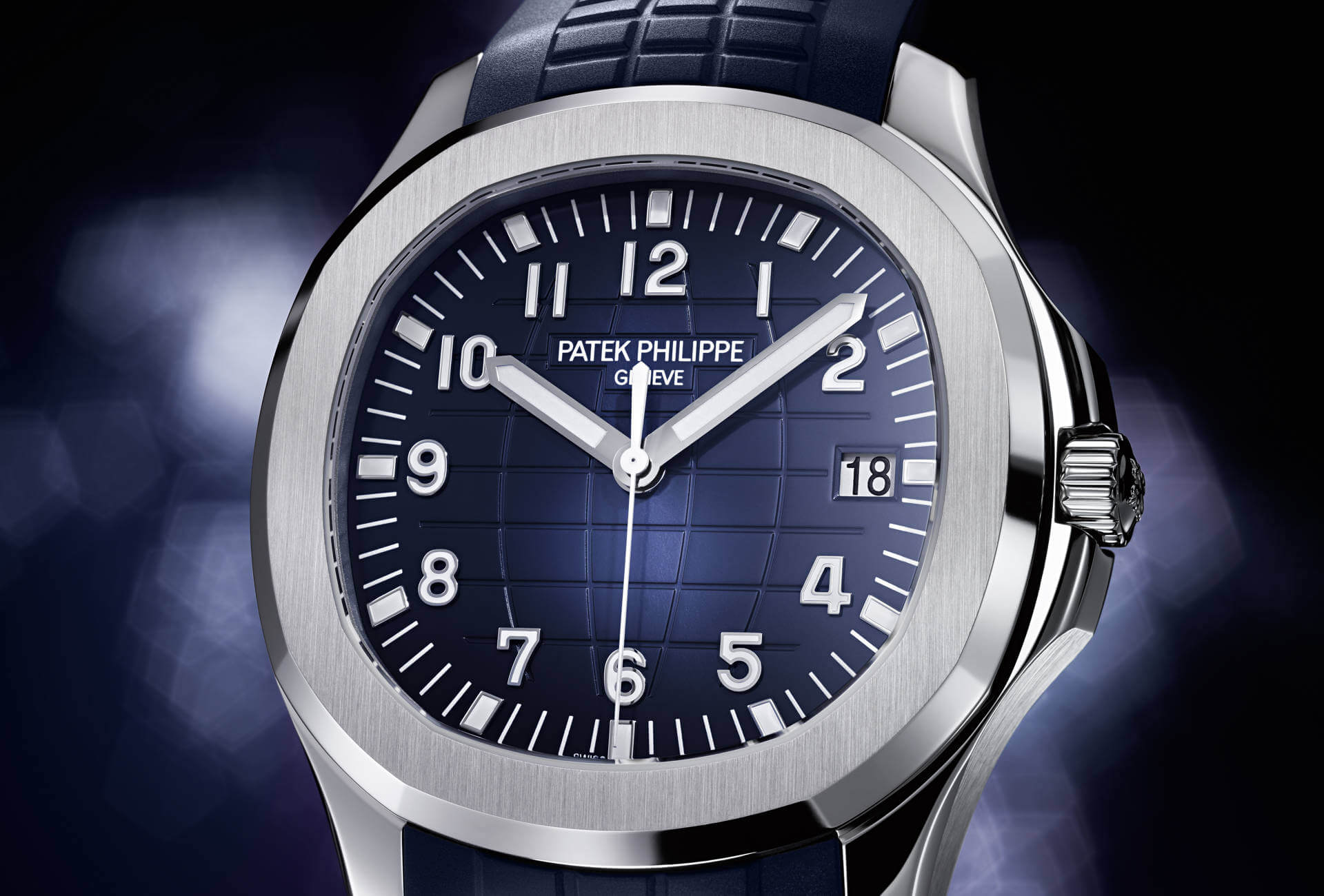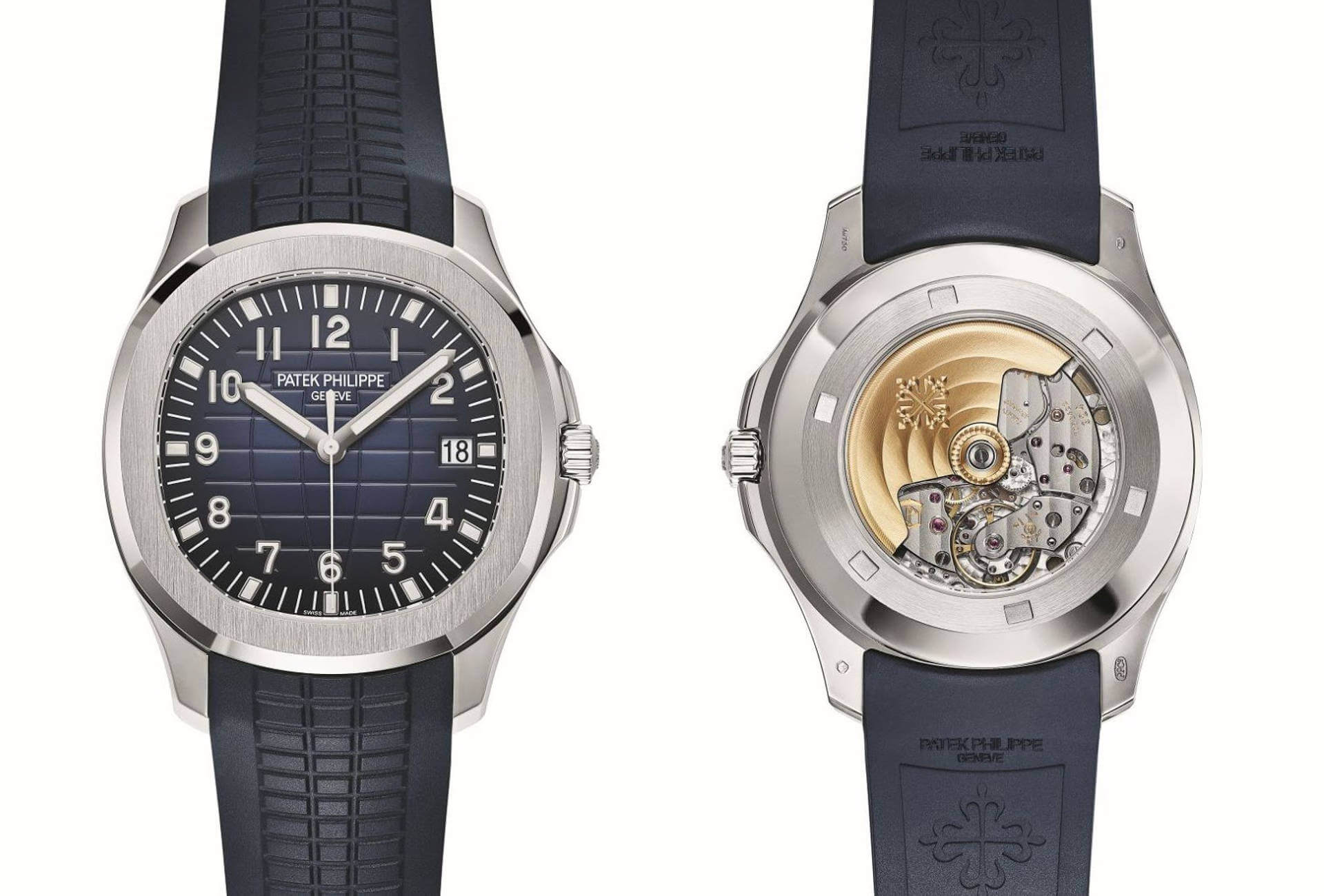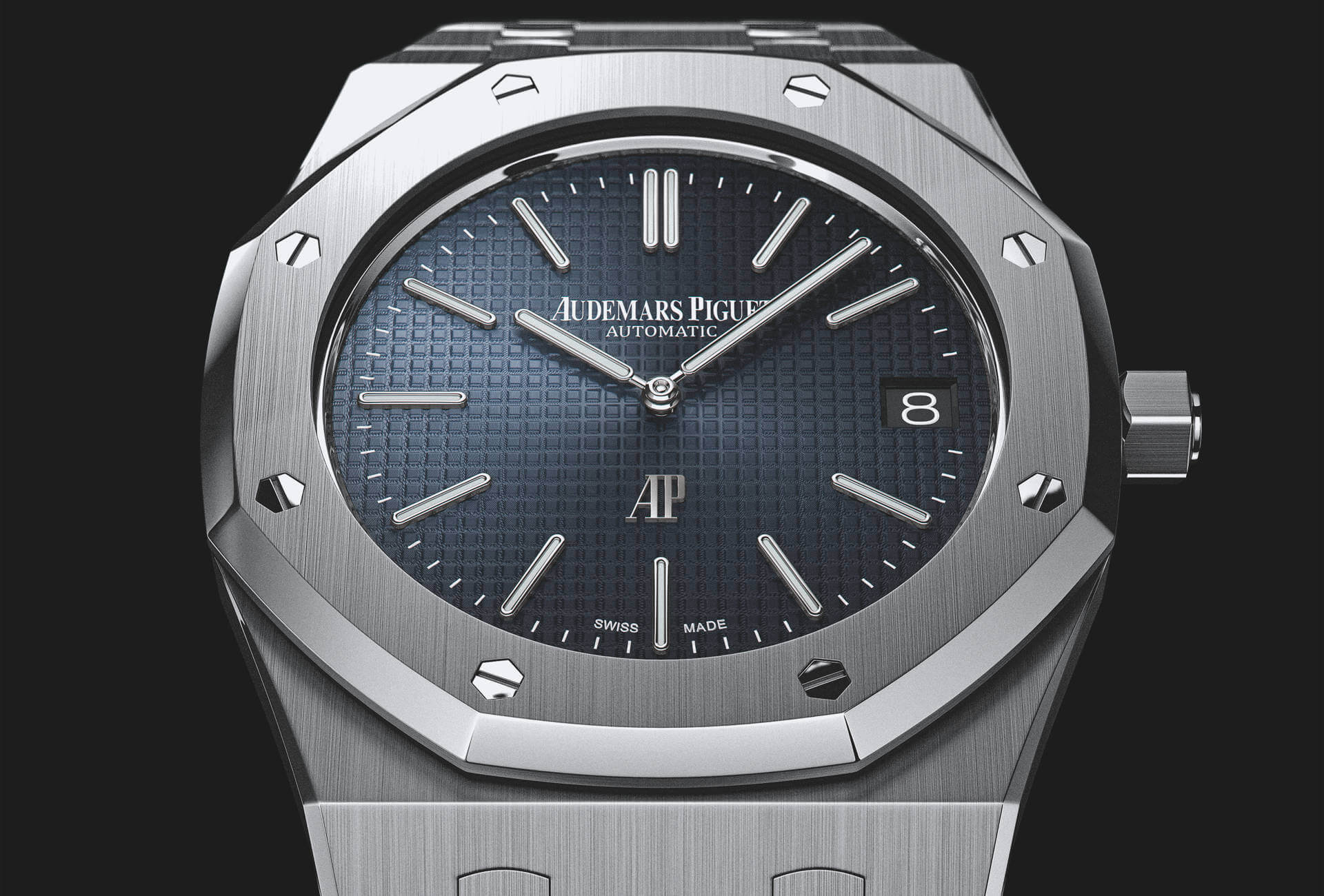Much as the Audemars Piguet Royal Oak Offshore is indebted to the original Royal Oak, the Aquanaut is a heavily influenced descendant of the Nautilus, released in 1976, and in this respect has ties to the great Gérald Genta, “father” of both the Royal Oak and the Nautilus. To understand the Aquanaut better, we shall therefore begin by taking a look at these two other watches.
All three – the Royal Oak, the Nautilus and the Aquanaut – were responses to new undercurrents in the market, and just as the market helped shape these timepieces, they also shaped the market. In the late 1960s, many of today’s iconic designs had already been released: the Speedmaster, the Submariner, chronographs from Breitling and Heuer, etc. This was also a period of innovation, driven by ongoing R&D within the industry. Watches became more accurate, more dependable, more efficient and more waterproof than ever before.
Un monde bipolaire
Until the 1960s, wristwatches could be divided into two categories. First luxury dress watches, possibly with complications, the majority of which were in gold; their steel variants were looked down on as the poor man’s version. Steel was, after all, a material for rugged sports watches, divers and chronographs, which constituted the second subdivision. These were purpose-built instruments, not luxurious timepieces, fashion icons or a status symbol on the wrist. The Speedmaster and the Daytona were chronographs for those who wanted to measure elapsed time at the racetrack, while people actually went diving with their Submariner on.
In 1969, however, a revolution was unleashed on the market – and no, we are not referring to the automatic chronograph but to the introduction of the first commercial quartz wristwatch, the Seiko Astron. Quartz was cheaper, more precise and somewhat cool, with the result that over the course of the following decade, mechanical watches became an (almost) obsolete technology. The Swiss had to react, and react they did, using every weapon at their disposal. One of these was to redefine the concept of the luxury watch. Which is the exact moment these three watches come into play.
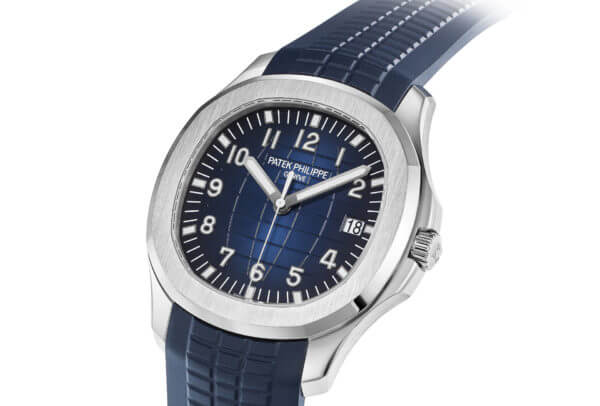
Gérald Genta is best known for the Royal Oak and for the Nautilus, yet they are just two of the dozens of watches he designed during a prolific career (that we won’t detail here), which include the Universal Genève Polerouter in 1954 and the Constellation for Omega: the famous pie-pan dials were his idea. However, Genta became a household name, in watch circles at least, in the early 1970s when he designed the Royal Oak.
In 1972, Genta obliged Audemars Piguet with a design for a revolutionary watch. It would have a robust, angular case in stainless steel with an integrated bracelet, and would be equipped with a haute-horlogerie movement. For the first time ever, a steel watch would cost as much as, if not more than, a gold dress watch. The concept of the luxury sports watch was born.
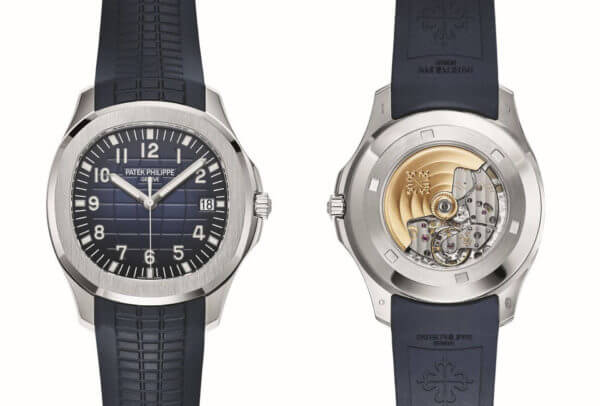
As Audemars Piguet’s main competitor, Patek Philippe had to react. The Patek Philippe Nautilus made its debut in 1976, and its distinctive, porthole-shaped design was nothing if not striking. Even today, its flat, softly octagonal bezel, flanked by “ears” (factory jargon for the hinge-like mechanism that locks the case together), and its tapering bracelet of ergonomically shaped interlocking blocks have a contemporary and fresh appeal. The inspiration for the Nautilus – the type of porthole found on transatlantic ocean liners – struck Genta while he was having dinner in a hotel restaurant, although legend has it he designed it over lunch in a cafe at the 1974 Basel Watch Fair. He recalls how it took him all of five minutes to sketch the watch that would become the icon we know today.
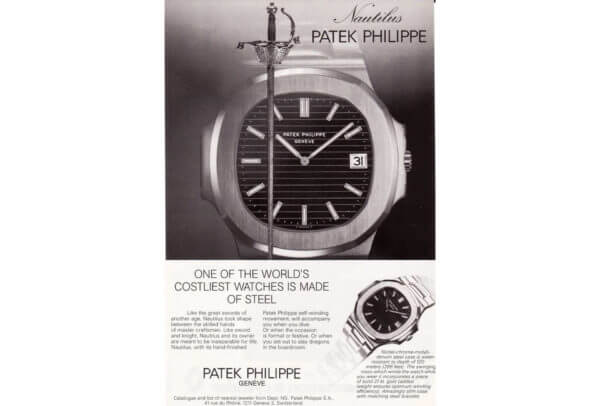
The Aquanaut
Patek Philippe upped the ante when it came to the 1997 Basel fair with the Aquanaut Ref. 5060A, designed with a younger generation in mind. This was a sporty yet chic men’s watch in stainless steel, simpler and less “classic” in its design, less expensive, and more adapted to daily use. The Aquanaut took inspiration from the Nautilus, but with a tri-part case and a simpler construction. It also had a rubber strap rather than a steel integrated bracelet. It did, however, share the Nautilus’ octagonal/porthole shape, and this was very much part of its appeal.
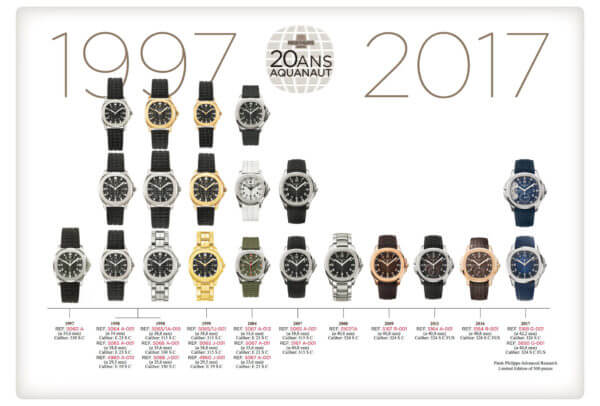
Fast forward to 2017, when Thierry Stern, President of Patek Philippe, presented the Aquanaut Ref. 5168G in a white gold case to celebrate the first 20 years of the Patek Philippe Aquanaut. This is the first men’s Aquanaut wristwatch in 18k white gold. A diameter of 42.2 millimeters makes it the largest model in the line, with an otherwise unchanged design. It is driven by the 4 Hz Patek Philippe 324 S C calibre with a power reserve of 45 hours and a Spiromax balance spring. This automatic movement is 3.3 mm high, thanks to which the new Aquanaut measures just 8.25 mm thick overall. As required by the Patek Philippe Seal, the 324 S C is accurate to -3/+2 seconds per day.
The dial is made from brass and colored with a blue PVD coating. It features applied Arabic numerals in 18k white gold with Superluminova, and 12 applied five-minute markers in 18k white gold with Superluminova. The baton-shaped hour and minute hands are also in 18k white gold with Superluminova. The counterbalanced seconds hand is in white-lacquered bronze. The strap is water-, UV- and abrasion-resistant, and is made from a composite material with checkerboard embossing to match the midnight-blue dial. The double-security fold-over clasp is in 18k white gold.
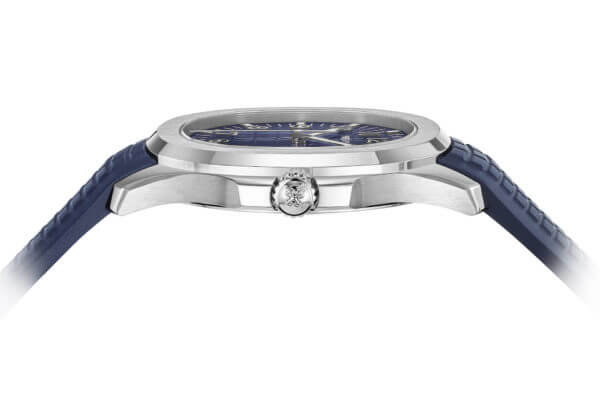
The Aquanaut is a luxurious watch that carries on a tradition while not entirely fitting the usual image of its maker, just as the Nautilus and the Royal Oak before it constituted a marked departure for the entire industry, at a time when the focus was on cost-cutting. They introduced a bold new concept that elevated the steel watch to luxury level, and I think it is fair to say that Rolex and others can thank them for their present success.







